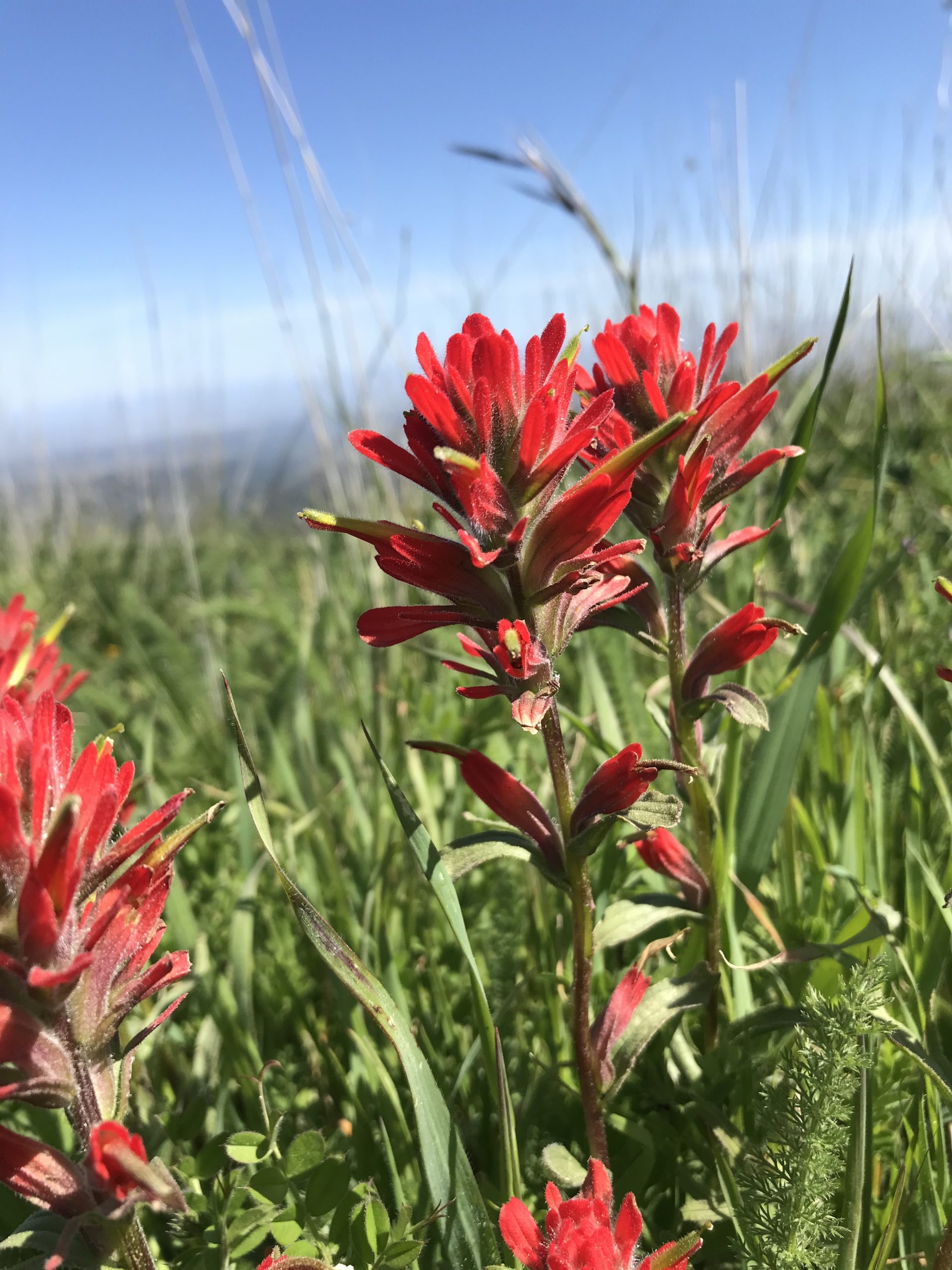
Laguna de Santa Rosa, by Sergio Lopez.
Outdoors in our region at this time of year, winter light is less assertive than its summer counterpart. Hues are softer, and leafy shadows tat ephemeral quilts on the wall. More than a visual phenomenon, this subdued light affects all living things including poets, plants, and landscape painters.
“Winter light in Northern California usually means warmth, or respite from the gloomy, gray days of winter doldrums,” says painter Sergio Lopez, a contributing artist in “Light Dance,” a show at Sonoma County’s Christopher Queen Galleries through February. As a painter, Lopez thinks of winter light literally, not metaphorically. “It’s magical enough on its own,” he says.
Based in Santa Rosa, Lopez takes his palette and paintbrushes to the redwoods or across coastal hills at Armstrong Redwood State Park, Willow Creek, or Pomo Canyon. “The sun is lower in the sky and the light is a bit more filtered. It gives a specific feeling to the light, and it makes me want to experience it.”
Painters and non-painters alike can find another kind of paintbrush in the plant world. At the California Academy of Sciences, curator of botany Sarah Jacobs studies Castilleja, a genus of flowering plants with many distinct species that you may know by the common name of Indian paintbrush. The term she uses for this genus of wildflowers is “the paintbrushes.”
Plants respond to winter light by a process called photoperiodism. “It’s actually the length of the non-light periods that impact growth cycles,” Jacobs says. “Some (but not all) plants detect or ‘measure’ the non-light periods to determine when to flower, or put extra resources into storage tissues.”
After the growing season, Castilleja foliolosa, Castilleja affinis, and Castilleja subinclusa, paintbrushes commonly found in our region, drop their leaves and stems and store minerals and compound chemicals in their lower stem and roots, forming a thickened caudex. “Ultimately, temperature will signal Castilleja to begin developing new flowering stems but until then, the plants are biding their time. They’re resting and storing up,” says Jacobs.

Castilleja affinis. Photo: Sarah Jacobs
The light and shortened length of days that we experience in winter is due to the earth’s daily rotation, yearly revolution around the sun, and tilt towards the North Star. Due to the earth’s orbit on the plane of the ecliptic (a poetic scientific phrase, if ever I heard one), the Northern Hemisphere is tilted away from the sun in winter, bringing us to the shortest day of the year, the winter solstice.
Winter solstice is a time of celebration and renewal around the world. Iranians mark it with an ancient festival, Shab-e Yalda; Southwest Hopi tribes welcome back the sun with the Soyal Solstice Ceremony; and Chinese mark the day with Dong Zhi. Fire and light sparkle in Scandinavia when girls in white dresses wear wreaths of candles on their heads, and in Vancouver when people with lanterns parade towards a bonfire to recognize new beginnings during the Solstice Lantern Festival.
The length of day and night also influences poets. “Winter light is truly a metaphorical influence on me,” says poet Suzanne Bruce. “It can be a smile trying to sneak out of a sad heart as it elongates shadows, leaving a sense of longing for more. Or it can be iridescent glitter on white snow, refreshing, invigorating, glorious. Although winter light is different from other seasonal light, its mysterious way of changing a view is both a whisper and a scream.”
Jacobs says that resting plants can serve as an analogy for what she feels when out in winter. “It always seems quieter and more restful. The angle of the light is different, and some scenery is almost contemplative. There’s something that makes me want to be quiet and just kind of be present in a way that’s not as busy. I find it to be very peaceful.”
The shorter days and chilly weather cause turtles and frogs to brumate (similar to hibernation), and trees to pull chlorophyll from their leaves resulting in autumnal hues. In regions colder than ours, skunks, raccoons, and squirrels lean into torpor, a physiological change known as “hibernation light,” a lethargy that can be experienced by people, too. It’s only natural.
As the world turns, tilts, and revolves around the sun, I remember my gray-haired kindergarten teacher at nap time. Rocking slowly in her chair, she once told us children resting on our mats that if we were very still, we could feel the earth turning. With closed eyes, I could. That imagining slipped me into a restful torpor as the light outside gained strength and the Castilleja prepared for the days when they would direct their stored energy into new leaves and stems, and eventually, flowers.

